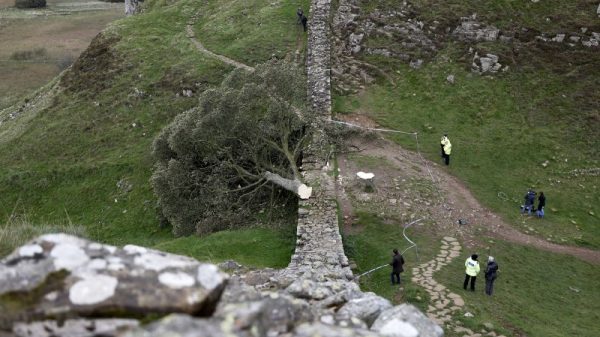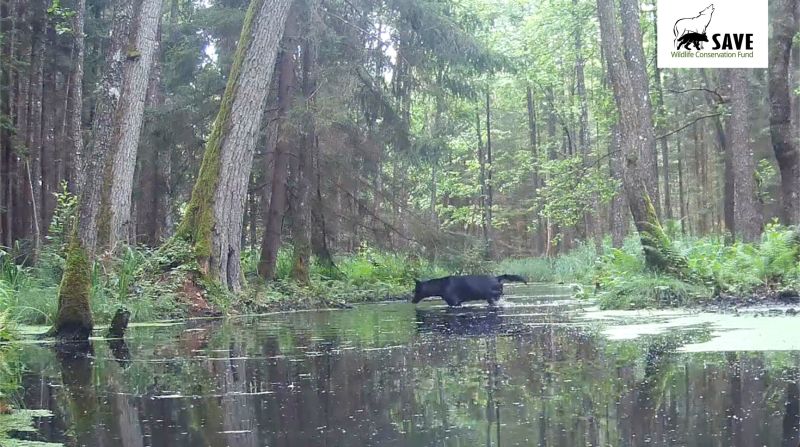Two rare black wolves, likely siblings, were spotted on camera crossing a stream in a Polish forest, a conservation organization said Sunday.
The unusual sighting, captured last year on a video camera set up by SAVE Wildlife Conservation Fund Poland project coordinator Joanna Toczydłowska, has prompted the organization to collect scat (droppings) in the forest in the hopes of learning more about the black wolves’ genetics.
“It’s something new and unusual,” Toczydłowska told The Associated Press.
Toczydłowska initially placed the camera to study beavers. When she noticed she was recording wolves instead, she kept the camera there and collected the black wolf footage a few weeks ago.
In one clip, a black wolf and a gray wolf slowly crossed a stream in the forest, the water nearly up to their bellies, before they leap onto the bank. A second clip, taken last fall, records two black wolves and a gray wolf fording the same stream.
Most of the 2,500 to 3,000 wolves in Poland are gray with red or black accents. Black fur comes from a genetic mutation that was likely in domesticated dogs thousands of years ago. The dark fur is rare in Europe due to a reduced genetic diversity, but at least half of the wolf population has black fur in Yellowstone National Park in the United States.
Because wolves travel in families and both black wolves were around 30 kilograms (66 lbs) — roughly the size of a German shepherd — Toczydłowska said they were likely siblings and roughly a year old. At least one is male.
The conservation organization, which has been monitoring wolves in Poland for 13 years, is not disclosing the forest’s location to keep the wolves safe from poaching and prevent misinformation about wolves from spreading.
Wolves were essentially extinct in Poland by the 1950s, but the population has returned in recent years, especially in central part of the country in the early 2000s. Toczydłowska and her colleagues teach other the public how to safely live in areas inhabited by wolfpacks.
“For people, it is a new phenomenon,” Roman Gula, head of the organization’s wolf monitoring project, told the AP. “Education is one of our major, major goals.”
The conservation fund announced the sighting last week on Facebook and asked for financial support to pay for the scat’s genetic testing to learn more about the black-fur mutation.






































